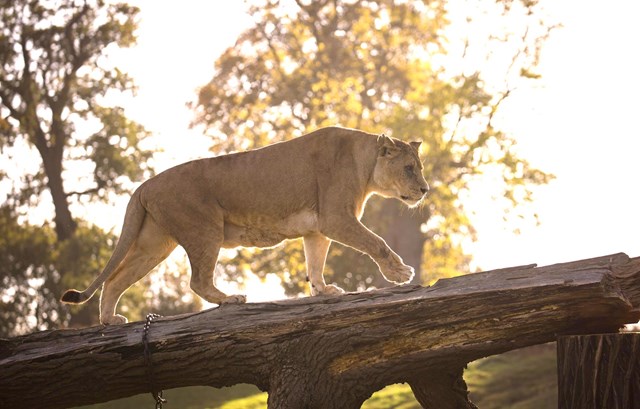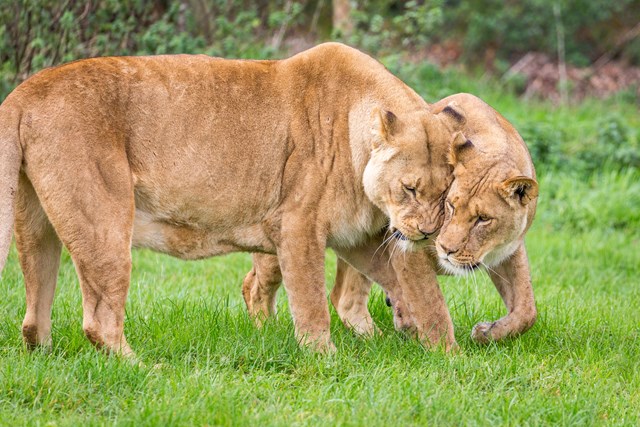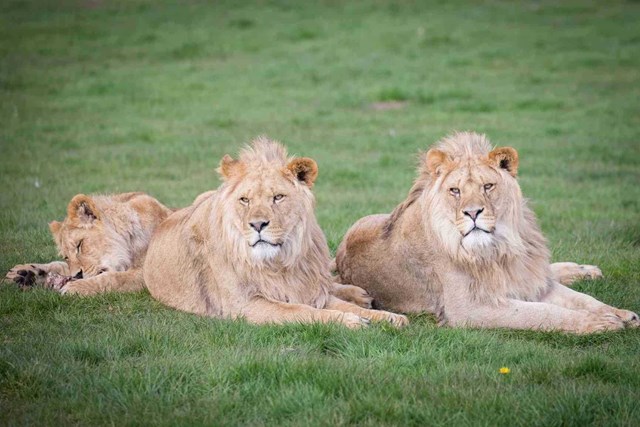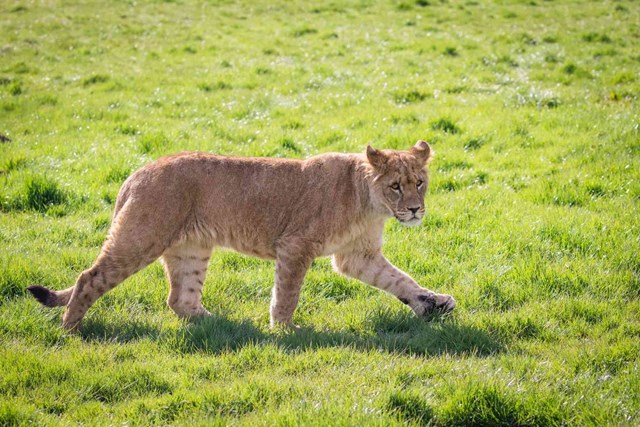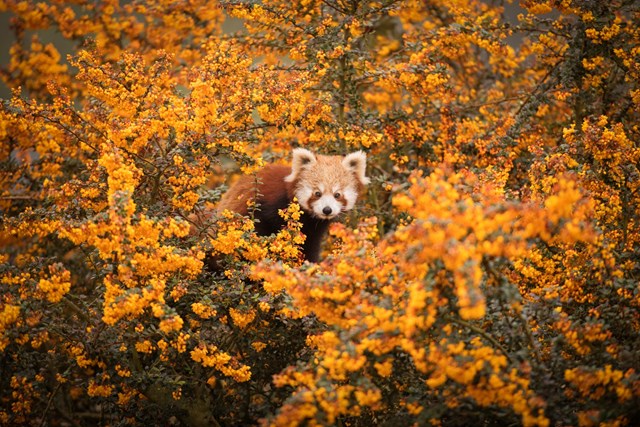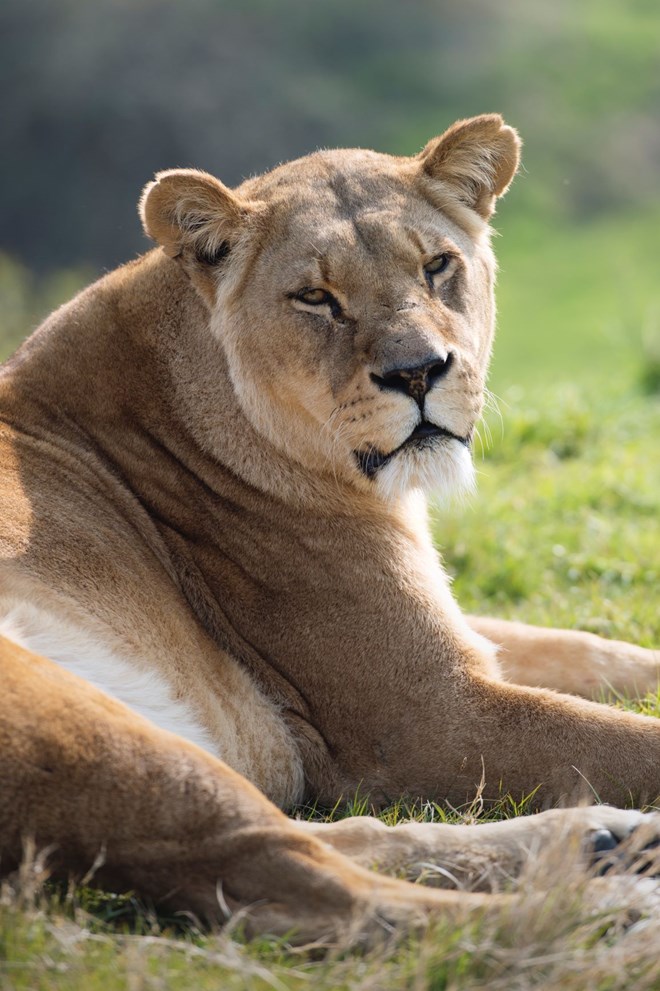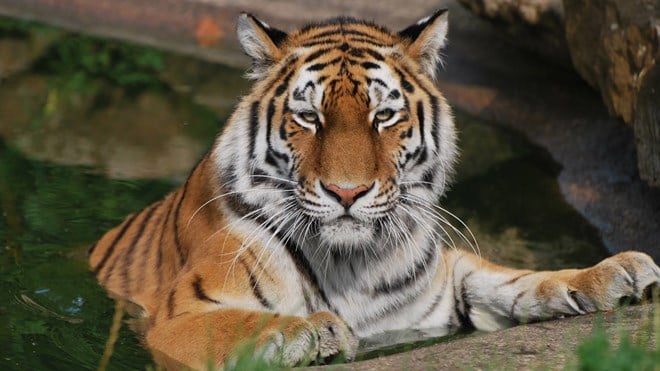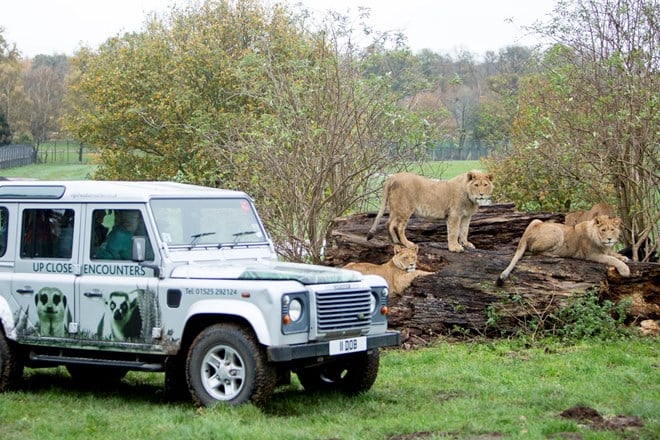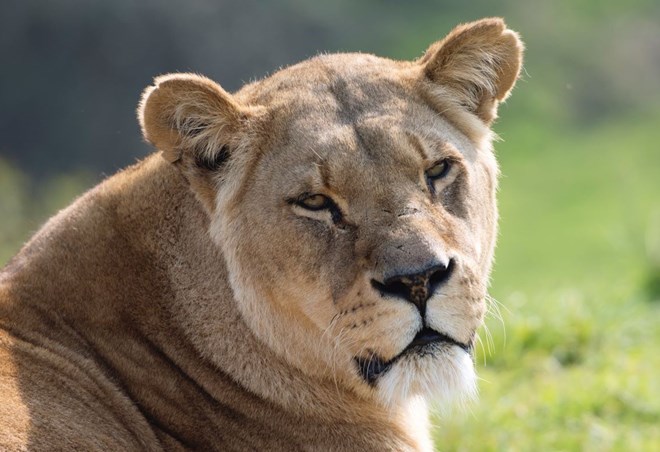
Overview
Lions are among the most social of the big cats; they live in prides, these are family units that can include up to three males, a dozen or so females and their young. The pride's lionesses are related and female cubs will usually stay in their pride. Male cubs will usually join another pride, taking over a group headed by an older male.
Woburn's pride of eight lions live in a 32-acre reserve in the Road Safari with the freedom to roam and exercise within a larger space than many zoo environments. Lions can sleep for up to 20 hours per day, so the pride is most often seen sleeping or relaxing on one of their favourite spots (higher ground with a vantage point).
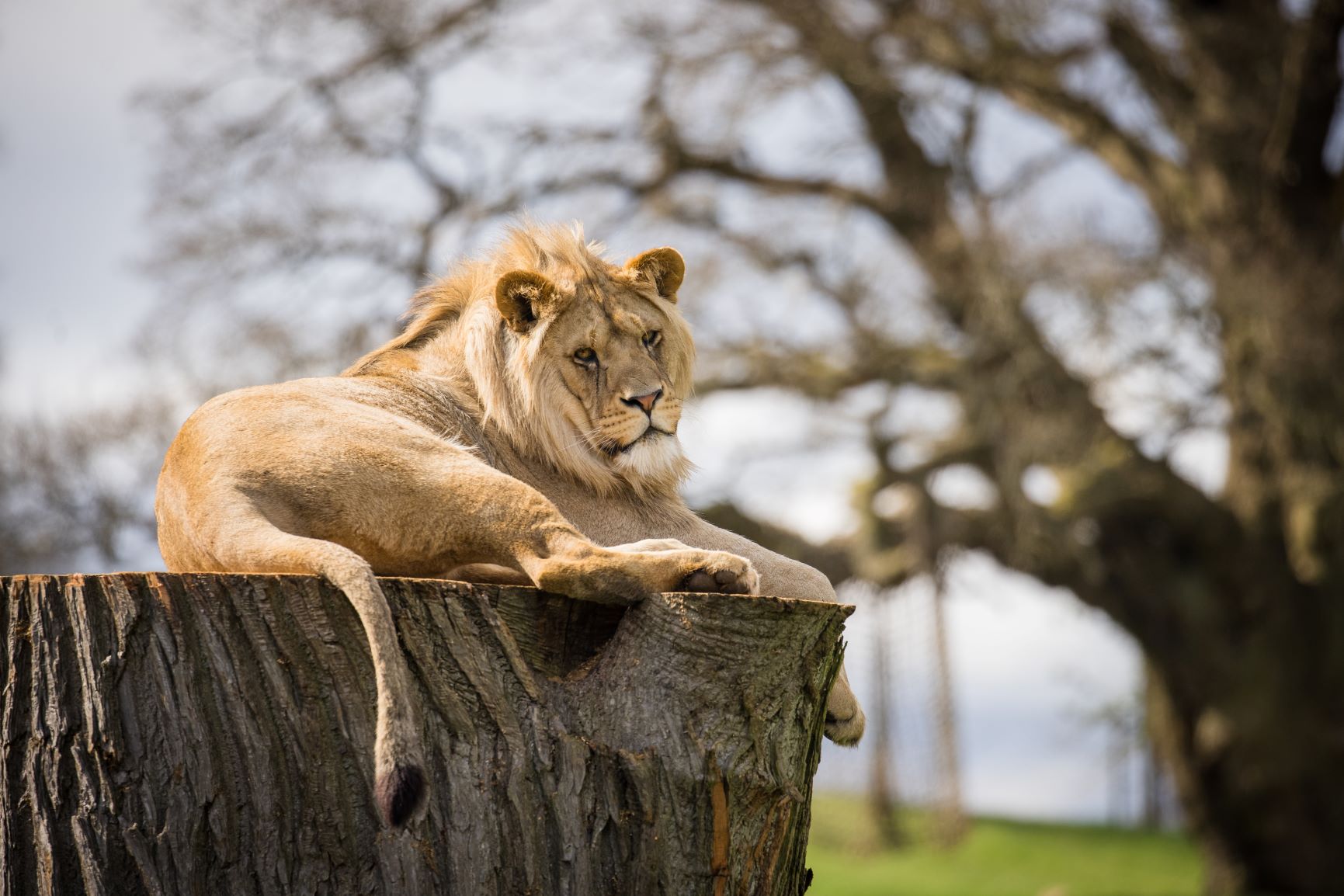
All about us
| Distribution: | Central and South Africa |
|---|---|
| Habitat: | Grasslands, savannah, dense bush and woodland |
| Height: | 0.8m – 1.2m at the shoulder. Length: 2.4m to 3.3m |
| Weight: | 120 to 250 kg |
| Lifespan: | 12-15 years in the wild, up to 20 in captivity |
| Threats: | Habitat loss and hunted for sport or as pests |
Scientific name: Panthera leo
Lions will display certain gestures within the pride, including head rubbing and social licking. They have many types of vocalisations including growling, snarling and roaring.

A playful pride
The lion is the second largest big cat, but that doesn't mean they don't like to play!
These social animals love to explore the latest enrichment activity provided to them by their keepers. From large boomer balls, to cardboard boxes, new scents placed around their enclosure, to this epic giant puzzle toy!
Specially created by the animal enrichment experts Team Building with Bite the toy had to be solid and robust enough for lions’ teeth and claws at play. The final build measured over 1.2m and weighed in at around 70kgs, and was sprayed in men’s fragrance which helps pique the lions’ interest.
African lion facts
Lions have a short coat of tawny, golden fur with a long tail that has a tuft of longer fur at the end, helping them remain unseen when stalking prey in long grasses. Male lions have longer hair around their head, neck and chest, known as a mane. Colouring is thought to be connected to testosterone levels, but it can range from blonde, red, brown to black in colour.
When cubs are born they have a spotted pattern on their coat which helps them to camoflauge against predators. Generally as they mature into adults the spots will fade, but this isn’t always a certainty. Some lions cub spots will remain faintly all their lives.
Their back teeth allow them to tear large pieces of meat from their prey. The small incisors at the front of the mouth are used to remove feathers and meat from bones.
Lions can often be seen scratching their claws against trees in the wild. Their claws are retractable, which helps them stay sharp, allowing them to grip their prey and bring them to the ground during hunting. Legs and the shoulders are extremely muscular and powerful, allowing them quick bursts of speed during hunting.
Co-operative hunting enables lions to take prey as large as buffaloes, rhinos, hippos and giraffe. However, scavenged food provides more than 50% of their diets—where lions ambush kills made by other carnivores. The most common diet for an African lion consists of a variety of antelope species such as the gazelle and other ungulates (hoofed mammals), such as buffalo and zebra.
Unlike other big cat species the lion is a social animal, living in a family unit known as a pride. Animals work together to hunt, but females will do 85-90% of the work as they are smaller, swifter and more agile; also lacking the conspicuous mane of hair. Females usually chase and ambush their prey, improving chances of success.
Lions are inactive for around 20 hours per day, and their levels of activity generally peak after dusk, with a period of socializing, grooming and defecating. Intermittent spurts of activity follow through the night hours until dawn, when most hunting takes place.
Lions will display certain gestures within the pride, including head rubbing and social licking. Their vocalisations include snarling, purring, hissing, coughing, meowing, woofing and roaring. Lions have the loudest roar of any big cat, the sound can be heard from a distance up to 8 km away.
A lioness has a gestation period of about 110 days, after which she can give birth to up to four cubs. Generally a female gives birth in a secluded area away from the group and introduces the cubs to the pride when they are about eight weeks old. Very often several females give birth around the same time and share the duties of protecting and nursing the cubs. Mothers nurse for up to 8 months and at 11 months of age, cubs start learning to hunt with the pride. Females care for their young until they are two, when they become ready to produce a new litter.
Males will reach maturity at around 3 years of age, when they might leave the pride. It is not unusual for brothers to leave together in twos or threes and together they will try to conquer a new pride.
Lions in zoos and safari parks are still wild animals and will have all their natural instincts. These can include keeping their order in their social structure; aggression over food and aggression when intergrating with new animals. Safari Parks are able to hold larger prides compared to zoos as they have more space and larger enclosures. These larger areas allow a pride to express more of their natural behaviours.
Safari park keepers will keep a careful watch for the welfare of each individual animal. It can be necessary to intervene when agression and fighting occurs. This can be accomplished using safari vehicles to stop fights; picking out instigators and forcing them to move away from other animals. The additional benefit of this method is to help expend an animals energy in running, directing their aggression away from other animals.
The same method is used to prevent animals from entering areas of the park that are off limits, or from getting to close to the open gates.
Lions in captivity cannot hunt their own food as they would in the wild, so it’s important for keepers to encourage animals to use the energy they would normally expend during hunting on other activities. Keeping skin and bones on meat ensures a tougher task during feeding.
Not every attempt at hunting in the wild is successful, so providing starve days in captivity to replicate their natural gorge / fast feed pattern.
As human populations continue to expand and take over former areas of wilderness, lions are losing their wild habitat. Livestock production can be the only viable living for many African people and often lands become severely overgrazed, degrading previously pristine habitats. In taking over lion habitat for arable farming, wild prey are being eliminated or moved on. Lions are consequently forced to hunt livestock to survive and are speared or poisoned in retaliation.
Lions have long been killed in rituals of bravery, as young men enter adulthood within their tribe; prized as trophies by game hunters as well as killed for their supposed medicinal or magical powers.
Even though the lion conservation status is only considered vulnerable at this current time, there are many conservation projects both in situ (in wild habitat) and ex situ (outside of natural habitat) currently in place to help the future of the African Lion. Projects in Tanzania and Botswana, where much of the lion populations live within vast National Parks, provide protection against poaching.
The ‘Living with Lions’ organisation has been tracking lions using GPS collars, to monitor lions threats and behaviour outside of national parks. With growing human populations surrounding these parks, there are an increasing number of human encounters. ‘Living with Lions’ provides invaluable knowledge for local communities on how to peacefully live alongside lions.
